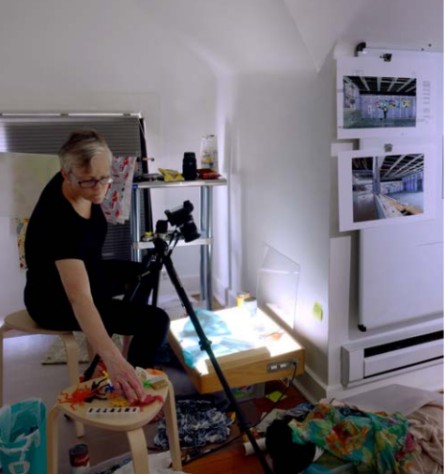I Spy Carry-On by Kati Toivanen
Introduction
Text-to-speech Audio
Taking inspiration from the visual riddles from the popular I Spy book series, local artist Kati Toivanen composed I Spy Carry-On which is located by Gate B52 by using items that could be found in a family’s carry-on luggage. Implementing a shadow-show approach, she placed the individual objects on vellum paper. She photographed them from underneath a light table before digitally arranging them into three collages. The intriguing visual compilations showcase everyday items, children's toys, and more, with additional objects paying homage to local culture. By creating three separate pieces, Toivanen alludes to the universal process by travelers and the continuous nature of carry-on luggage being X-rayed at an airport's security checkpoint.
After coming to the United States from Finland, Kati Toivanen earned her Bachelor of Fine Arts from Clark University in Worcester, Massachusetts, and a Master of Fine Arts from the School of Art Institute of Chicago. As an active artist and educator, Toivanen has been the recipient of multiple grants, awards, and fellowships, has been featured in solo and group exhibits internationally, is the author of multiple publications, and is currently a Professor of Studio Art at the University of Missouri-Kansas City.
Images
I Spy Carry-On by Kati Toivanen, Kansas City International Airport, Gate B52

I Spy Carry-On in progress in Toivanen's digital studio

Kati Toivanen photographing images for I Spy Carry-On on a light table in her studio

Backstory and Context
Text-to-speech Audio
Cite This Entry
Stahly, Nichole, David J. Trowbridge, and Clio Admin. "I Spy Carry-On by Kati Toivanen." Clio: Your Guide to History. June 11, 2024. Accessed March 31, 2025. https://theclio.com/entry/170491/tour/18
Sources
I Spy Carry-On, Kati Toivanen. Accessed November 15th, 2023. https://katitoivanen.com/i-spy-carry-on/.
About, Kati Toivanen. Accessed November 15th, 2023. https://katitoivanen.com/about/.
Photo by David Trowbridge
https://flykc.com/public-art
https://fox4kc.com/community/photos-unique-art-youll-find-at-the-new-kci-airport-terminal/

